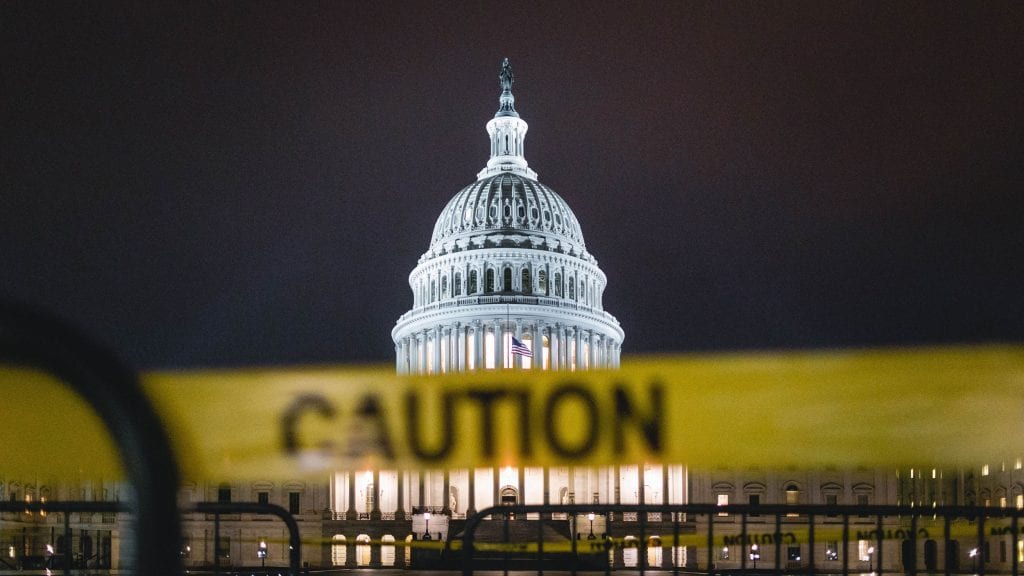“Did you see this?”
I was walking through the Upper School office when a colleague motioned me over to her computer, her eyes wide. I glanced over her shoulder (while keeping a COVIDly safe distance). On the screen, throngs were rampaging into the Capitol.
“Well, that’s not good,” we both said. As we watched, it just kept getting worse.
Like most educators on the evening of January 6th, I functioned with a split brain: one side, horrified at the images, kept searching the Internet for more information, for a better understanding. The other side, horrified at the images, started thinking about how we were going to support our students the following day.
All of us were grappling with twin concerns: the insurrection at the Capitol, and the distinct differences in how the domestic terrorists were handled, versus how the anti-racist protestors were met this summer.
We all knew that we couldn’t (and can’t) ignore those issues, because they affect students and their well-being. How do students focus on a test when they once again witness blatant racism? How do students focus on that essay when in the back of their heads, they are thinking “will we have a government in the morning?”
Predictably, texts, emails, and Microsoft Teams chats mushroomed throughout the afternoon and evening of the 6th. Ms. Johnson-Webb, Director of Equity and Community Engagement, reached out to me, sharing information and observations from educators of color across the country. As well, Mrs. Maret Jones, our Upper School Government teacher and 11th-12th grade Dean, worked with Upper School History Department chair Mr. Lasseter and the other history teachers that evening to sketch out how we would engender fact-based conversations the next day, cutting through the misinformation and fear.
The following morning, a bevy of adults came together, crafting a plan that addressed short and long-term needs. We wanted to provide space for students to process fears, a structure for them to analyze causes and effects, an area where they could employ all those skills we have asked our students to develop over the years.
We shared that plan with the Upper School faculty at 8:30am, and then sent out an email to the students just as classes started, offering the following:
- We opened a classroom and Zoom room for a day-long meeting, one staffed by the Upper School History Department. Students were invited to drop by at their convenience to discuss the historical and governmental intricacies of the history we were watching.
- We invited students to reach out to specific individuals for one-on-one conversations should they feel the need, listing out those adults and making sure that they were available throughout the day.
- We let teachers know that they were welcomed—and encouraged if comfortable—to acknowledge the terrorist actions in the Capitol during the first 15 minutes of class, but we also encouraged the faculty to bound the time; we wanted the students to know that we supported them in this anxious period, but we didn’t want to flog them with six hours of discussion on the same topic.
- We reminded students of a discussion opportunity during Flex Day the coming week, one organized and led by the Community Engagement class. In that teach-in, students discussed issues around voting rights, misinformation, and fraudulent claims about the election.
- We verified that there was a space for our Black students to meet, to process, to support each other.
The students handled the stress with their typical panache: some made use of the discussion rooms, some reached out to individuals, some started to tease apart the issues, some used classes and schoolwork and friends as a haven from the broadcast history. In those moments, our strategic mission of focusing on student wellness truly came alive—all because the faculty, staff, and students worked together, making sure that we all had the support we needed that day.
The images of nooses, of Confederate flags in the Capitol, of violent beatings, of malevolence against people and democracy streaming into our lives on January 6th typified the ugliness that some have always seen, and some only see now. No matter what, though, we couldn’t ignore it nationally or locally.
So, the actions at CA on January 7th—the discussions, the quiet words of encouragement, the open ears and hearts, both in person and virtually—provided a local, temporary balm to a national disgrace.
On that day, we couldn’t wipe away the historical ugliness, but we could continue to support each other. Together.
CA Curious blogs offer personal, behind-the-scenes insights and reflections from our leadership, faculty, and staff on the day-to-day implementation of our strategic vision.

